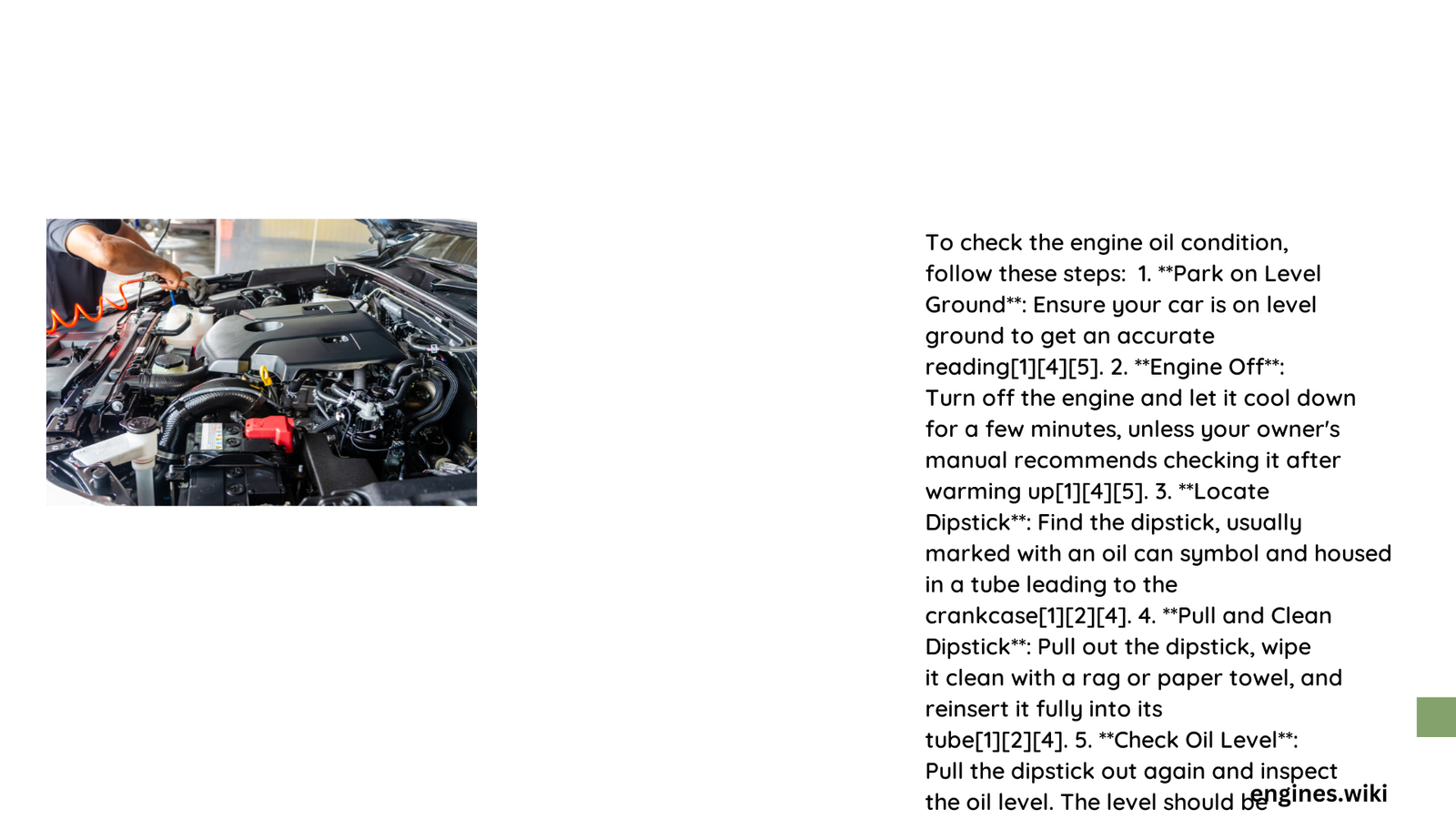Engine oil is the lifeblood of your vehicle, critical for maintaining optimal performance and preventing mechanical failures. Understanding how to check engine oil condition involves analyzing viscosity, detecting contamination, monitoring wear indicators, and recognizing when professional intervention is necessary. This comprehensive guide will equip you with essential knowledge to protect your vehicle’s engine and extend its operational lifespan.
Why Should You Check Engine Oil Condition?
What Happens When Engine Oil Degrades?
Engine oil degradation can lead to significant mechanical problems:
– Increased friction between moving parts
– Accelerated engine wear
– Reduced fuel efficiency
– Potential catastrophic engine failure
How to Visually Inspect Oil Condition?
Color and Consistency
- Fresh Oil: Amber or light brown
- Degraded Oil: Dark brown or black
- Contaminated Oil: Presence of particles or gritty texture
What Tools Do You Need for Oil Condition Assessment?
| Tool | Purpose | Estimated Cost |
|---|---|---|
| Dipstick | Basic visual inspection | $0 (included with vehicle) |
| Oil Analysis Kit | Detailed contamination check | $20-$50 |
| Digital Oil Analyzer | Advanced diagnostic | $100-$300 |
Key Factors in Oil Condition Evaluation

What Determines Oil Quality?
- Viscosity Stability
- Maintains consistent flow across temperature ranges
- Prevents excessive engine wear
-
Ensures proper lubrication
-
Contamination Levels
- Metal particle presence
- Soot accumulation
- Water content
- Chemical breakdown
How Often Should You Check Oil?
Recommended Inspection Intervals
- Normal Driving Conditions: Every 1,000 miles
- Severe Driving Conditions: Every 500 miles
- Before Long Trips: Always recommended
Advanced Oil Condition Diagnostics
What Are Professional Oil Analysis Techniques?
- Spectrographic analysis
- Elemental composition testing
- Wear metal detection
- Viscosity measurement
Signs of Immediate Oil Replacement
- Critical Indicators:
- Metallic particles exceeding 100 ppm
- Soot levels above 2-3%
- Water contamination over 0.1%
- Significant color/consistency changes
Practical Maintenance Recommendations
Best Practices for Oil Condition Management
- Use manufacturer-recommended oil viscosity
- Follow prescribed change intervals
- Utilize high-quality synthetic oils
- Perform regular visual and professional inspections
Common Mistakes to Avoid
- Ignoring oil change schedules
- Using incorrect oil viscosity
- Neglecting oil filter replacements
- Overlooking warning signs
Technical Insights
Oil Viscosity Explained
- 5W-30 Oil Example:
5W: Low-temperature performance30: High-temperature protection- Balanced performance across driving conditions
Conclusion
Proactive engine oil condition monitoring is crucial for vehicle longevity and performance. By understanding viscosity, contamination indicators, and maintenance techniques, you can significantly extend your engine’s operational life and prevent costly repairs.
Pro Tips
- Keep detailed maintenance records
- Use digital tracking apps
- Consult professional mechanics annually
References:
1. Castrol USA – Oil Viscosity Guide
2. Select Synthetics – Motor Oil Basics
3. Kixx Newsroom – Engine Oil Insights
